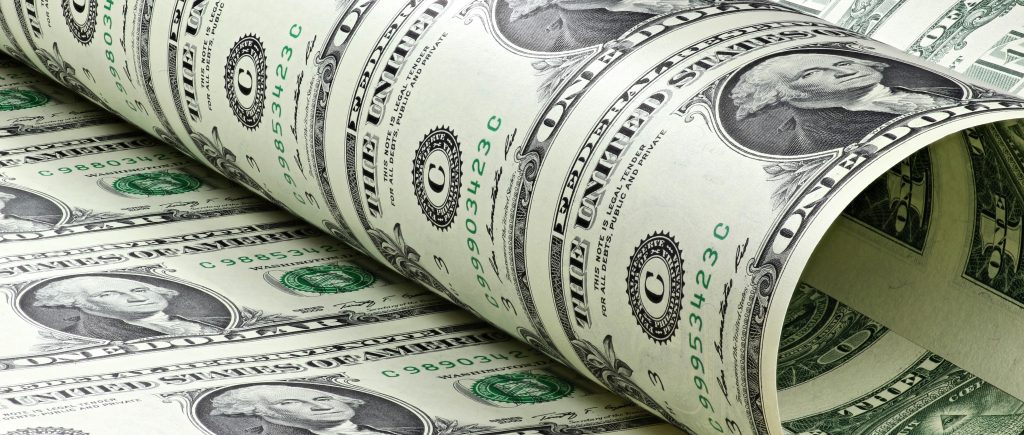The U.S. Dollar Index (DXY) held steady at 97.64, up 1.5% from its July 1 low of 96.38, after peaking at 97.75, near its all-time high of 98.00. President Donald Trump’s aggressive tariff campaign, targeting six additional nations with 20%–30% duties and imposing a 50% copper tariff, has bolstered safe-haven demand for the Dollar. With the August 1 tariff deadline looming and Federal Reserve’s June FOMC Minutes due at 6:00 PM GMT, markets remain cautious. Policymakers must provide clear trade and monetary signals to curb volatility and sustain economic stability.
Tariff Tensions Boost Dollar Demand
Trump’s tariff push intensified with letters targeting Algeria, Iraq, Libya, Brunei, Moldova, and the Philippines, following notices to 14 other nations, including Japan and South Korea, with duties up to 40%. Set to start August 1, these “reciprocal tariffs” aim to address perceived trade imbalances but risk a 0.7% GDP reduction in 2025, per Yale Budget Lab estimates, with long-term GDP 0.38% lower due to global retaliation. A 50% tariff on copper imports, critical for U.S. industry, drove copper futures up 17%, while threats of 200% pharmaceutical duties added market uncertainty. The International Monetary Fund warns of a 0.5% global GDP hit, fueling safe-haven flows into the Dollar.
Fiscal Policy and Economic Impacts
The recently passed “One Big Beautiful Bill” extends 2017 tax cuts, boosting GDP by 0.2% in 2025 and 1.5% by 2028, per Tax Foundation projections, but its $5 trillion debt ceiling increase raises deficit concerns. A Council of Economic Advisers study claims tariffs have “zero impact” on inflation, citing falling import prices and rising domestic investment. However, BRICS nations, criticized by Trump for challenging Dollar dominance, face an additional 10% levy, escalating tensions after the Rio summit, where leaders opposed U.S. trade tactics. These policies strengthen the DXY but risk global trade disruptions.
Monetary Policy in Focus
The FOMC Minutes, due July 9, are critical as markets seek clarity on September rate cut odds, currently at 78% per CME FedWatch Tool, following June’s strong 147,000-job Nonfarm Payrolls report. Trump’s call for immediate rate cuts pressures the Federal Reserve, which must balance 2.7% inflation and tariff-driven risks. The DXY’s technical setup is cautiously bullish, but a breakout above 97.80 is needed to confirm upward momentum. A failure to clear this level could see DXY retreat to 97.00, especially if trade talks falter.
Market Dynamics and Currency Outlook
The Dollar’s gains reflect safe-haven demand amid tariff uncertainties, with USD/JPY hitting multi-week highs near 147.00 and EUR/USD stabilizing above 1.1700. GBP/USD hovers near 1.3600, supported by the Bank of England’s Financial Stability Report, while AUD/USD climbs above 0.6500 on hawkish Reserve Bank of Australia signals. Commodity markets are mixed, with WTI crude oil at $69.00 per barrel and gold at $3,300, pressured by rising U.S. yields. Investors await weekly U.S. crude inventory data and MBA Mortgage Applications for further cues.
Stabilizing Global Markets
The DXY’s resilience at 97.64 underscores tariff-driven Dollar strength, but escalating trade tensions threaten economic stability. U.S. policymakers must negotiate trade deals to mitigate GDP risks, while the Federal Reserve should clarify rate expectations to anchor markets. Investors should monitor FOMC Minutes, trade negotiation outcomes, and upcoming Canadian jobs data on July 11. Without coordinated policy actions, the DXY risks volatility, potentially testing 98.50 or retreating to 97.00 by late July, impacting global currency and commodity markets.

 Noor Trends News, Technical Analysis, Educational Tools and Recommendations
Noor Trends News, Technical Analysis, Educational Tools and Recommendations




